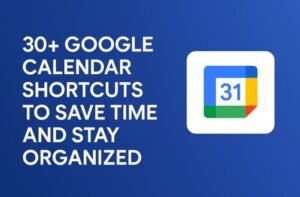No-Code vs Low-Code Which One Should You Choose in 2025?
In 2025, digital transformation is no longer optional—it’s essential. Whether you’re an entrepreneur building your first startup, a marketer launching a landing page, or an enterprise streamlining workflows, you’ve probably come across the terms No-Code and Low-Code.
But what do they really mean?
This guide breaks down the key differences in the debate of No-Code vs Low-Code: What’s the Difference in 2025? We’ll cover definitions, use cases, real-world examples, pros, cons, and which platform type is better suited for your specific needs.
Let’s decode the future of building—without code.
What is No-Code?
No-code platforms allow users to create software, websites, and applications without writing any code. These tools use visual interfaces—like drag-and-drop builders, pre-configured logic blocks, and templates—so anyone can build digital products.
Key Features of No-Code Platforms:
- Drag-and-drop editors
- Visual workflows
- Pre-built templates
- No programming language knowledge required
- Instant publishing and integrations
Common Use Cases for No-Code (2025):
| Use Case | Example Platform |
|---|---|
| Build a website | Wix, Squarespace, Webflow |
| Launch an online store | Shopify, Zyro |
| Automate workflows | Zapier, Make.com |
| Create internal tools | Softr, Glide, Notion |
| Build mobile/web apps | Adalo, Bubble |
What is Low-Code?
Low-code platforms allow users to build applications faster by minimizing the amount of manual coding required. These tools offer visual builders like no-code, but also give developers the ability to insert or customize code for advanced functionality.
Key Features of Low-Code Platforms:
- Visual design + optional custom code
- Backend logic & database integrations
- APIs and DevOps capabilities
- Scalability for enterprise apps
Common Use Cases for Low-Code (2025):
| Use Case | Example Platform |
|---|---|
| Build enterprise web apps | OutSystems, Mendix |
| Automate backend logic | Retool, Appian |
| Integrate systems (CRM, ERP) | Microsoft Power Apps |
| Create industry-specific tools | Zoho Creator, Betty Blocks |
| Customize no-code projects | Bubble (with plugins) |
No-Code vs Low-Code: Side-by-Side Comparison (2025)
| Feature | No-Code | Low-Code |
|---|---|---|
| Target Users | Non-technical users | Developers, technical users |
| Learning Curve | Very low | Moderate |
| Customization | Limited to platform templates | Highly customizable |
| Speed of Development | Fast | Fast to moderate |
| Flexibility | Limited beyond templates | High |
| Best For | MVPs, websites, small tools | Scalable apps, integrations |
| Coding Needed? | ❌ None | ✅ Some (optional but powerful) |
| Security & Compliance | Moderate | Enterprise-grade |
| Popular Platforms | Wix, Shopify, Webflow, Glide | Mendix, OutSystems, Power Apps |
Real-Life Examples: When to Use No-Code or Low-Code
Example 1: Small Business Website
Best Choice: No-Code
Why? Tools like Squarespace or Wix can help a bakery owner create a beautiful, responsive site in a few hours. No need for backend logic or complex workflows.
Example 2: Sales Team Internal Tool
Best Choice: Low-Code
Why? The sales team needs to pull real-time data from a CRM, customize dashboards, and update KPIs. A platform like Retool or Power Apps allows some light coding with flexible APIs.
Example 3: Startup MVP (Marketplace App)
Best Choice: Combo of No-Code + Low-Code
Why? Use Bubble for the frontend UI (drag-and-drop), then connect custom logic or 3rd-party APIs using JavaScript. This hybrid approach accelerates launch time while offering customization.
Why the No-Code and Low-Code Market is Booming in 2025
According to Gartner, by 2025:
- 70% of new apps will be built with no-code/low-code platforms.
- Companies will reduce IT costs by 50% by leveraging no-code workflows.
- Demand for traditional software developers is shifting toward citizen developers.
Authoritative Source Insight:
“Low-code and no-code tools are the foundation of modern innovation. The tools let anyone become a creator, not just a coder.”
— Forrester Research Report, 2025
Key Benefits of No-Code and Low-Code in 2025
Benefits of No-Code:
- Launch ideas fast
- Lower costs (no dev team needed)
- Empower marketers, creators, and solopreneurs
- No technical debt
Benefits of Low-Code:
- Balance between speed and customization
- Supports complex business logic
- Ideal for cross-team collaboration
- Enterprise-grade scalability
Challenges to Consider
| Challenge | No-Code | Low-Code |
|---|---|---|
| Platform Lock-In | ⚠️ Yes | ⚠️ Sometimes |
| Performance on Large Scale | ❌ Limited | ✅ Better suited |
| Custom Code Integration | ❌ Not Possible | ✅ Yes, easily supported |
| Data & Security Control | ⚠️ Limited | ✅ Stronger with dev oversight |
Expert Opinions: What Developers & Creators Say
“No-code gave me the freedom to launch my e-commerce store in a week. I didn’t need to rely on anyone.”
— Sadia Khan, Entrepreneur
“Low-code allowed our IT team to prototype a custom HR tool in days. It replaced what would’ve taken months to code.”
— Joseph Akintola, Enterprise Developer
“In 2025, your ability to ship fast will define your growth. No-code and low-code are your shortcuts.”
— Mira Patel, Product Manager at a SaaS startup
Tips to Decide Between No-Code and Low-Code
Evaluate Your Team’s Skills
- No developers? Go no-code.
- Some technical expertise? Low-code gives more room.
- Define Your Project Scope
- Need a simple site or form? No-code.
- Need database integration, API calls, or custom logic? Low-code.
- Consider Scalability
- MVP or side hustle? No-code works.
- Long-term SaaS or enterprise app? Choose low-code.
- Assess Cost and Vendor Lock-In
- Check pricing tiers for growth.
- See if platforms offer export options or custom domain control.
Popular No-Code and Low-Code Platforms in 2025
| Category | Platforms |
|---|---|
| No-Code Website | Wix, Webflow, Squarespace, Carrd |
| No-Code Apps | Glide, Adalo, Softr, Bravo Studio |
| No-Code Automation | Zapier, Make, Airtable |
| Low-Code Apps | Mendix, Retool, OutSystems, Betty Blocks |
| Low-Code DevOps | Microsoft Power Platform, Pega |
Conclusion: No-Code vs Low-Code—Know the Difference, Own the Outcome
So, what’s the real difference in No-Code vs Low-Code: What’s the Difference in 2025?
| If You’re… | Go With… |
|---|---|
| A creator or entrepreneur | No-Code |
| A technical team scaling apps | Low-Code |
| Building a simple project | No-Code |
| Needing enterprise power | Low-Code |
| Wanting fast MVP + control | Both (Hybrid) |
No-code empowers the non-technical creators. Low-code speeds up development for tech-savvy teams. In 2025, the smartest businesses are leveraging both.
Which one are you planning to use—no-code or low-code? Let us know in the comments!
Subscribe to our newsletter for weekly tips on tools, trends, and tutorials.
Need help choosing a platform? Contact us for a free consultation.




